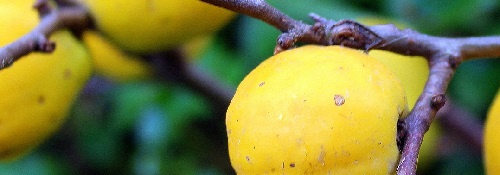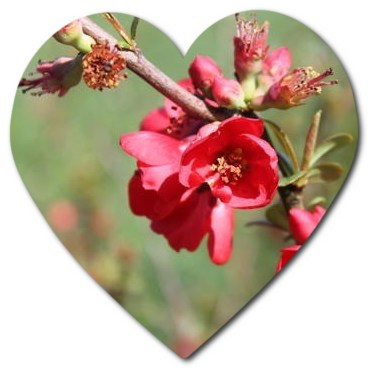Chaenomeles speciosa, commonly known as flowering quince, is a deciduous flowering shrub that belongs to the Rosaceae family. It is native to eastern Asia, including China, Japan, and Korea. This plant is primarily grown for its ornamental value and is popular for its attractive, early spring blossoms.
Chaenomeles speciosa, commonly known as flowering quince, is primarily grown for its ornamental qualities, and it is not typically associated with significant toxic or medicinal effects. However, it’s important to note that while it is not commonly considered toxic, there are no known or widely recognized medicinal uses for Chaenomeles speciosa either. Here are some important points about Chaenomeles speciosa:

- Ornamental Plant: Flowering quince is primarily grown as an ornamental shrub due to its attractive and colorful spring blossoms. It is appreciated for its early spring flowers, which can be red, pink, white, or orange, depending on the cultivar.
- Fruit: The fruit of Chaenomeles speciosa is not typically consumed by humans. While it is not known to be highly toxic, the fruit is generally small, hard, and not considered palatable for eating.
- Wildlife Attraction: The fruit may be attractive to some wildlife, particularly birds. Flowering quince can serve as a food source for birds in the fall and winter.
- Potential Allergies: As with many plants, some individuals may be sensitive to certain components of Chaenomeles speciosa, and skin contact with the plant’s leaves and stems may lead to minor skin irritation in some cases.
Overall, Chaenomeles speciosa is generally considered safe as an ornamental shrub in landscaping and gardens. However, it is not typically used for any medicinal, culinary, or other practical purposes, and the fruit is not commonly consumed by humans. If you have any specific concerns or questions about the plant’s effects or use, it’s a good idea to consult with local gardening experts or horticulturists who are knowledgeable about plants in your region.
What is Chaenomeles speciosa?
- Flowers: One of the most distinctive features of Chaenomeles speciosa is its vibrant, showy flowers. These flowers typically bloom in early spring, often before the leaves appear, making them a welcoming sight in gardens and landscapes. The blossoms can range in color, including shades of red, pink, white, or orange, depending on the cultivar.
- Leaves: The leaves of flowering quince are simple, with a serrated or toothed margin. They are typically dark green and provide a nice backdrop to the colorful flowers.
- Fruit: The fruit of Chaenomeles speciosa is typically small, hard, and often referred to as quince-like. While the fruit is technically edible, it is not commonly consumed due to its astringent and sour taste. It is generally more valued for its ornamental appeal and is not typically grown for fruit production.
- Growth Habit: Chaenomeles speciosa is a woody shrub that can reach a height of 3 to 10 feet (1 to 3 meters) and has a similar spread. It can be grown as a single specimen plant or as a hedge or border plant in gardens and landscapes.
- Wildlife Attraction: The fruit of flowering quince can be attractive to birds and wildlife. It provides a food source for birds in the fall and winter, which can be beneficial for attracting and supporting local bird populations.
- Landscape Use: Flowering quince is often used for its early spring blooms, making it a visually appealing addition to gardens, parks, and landscapes. It can be incorporated into mixed borders, used for mass plantings, or grown as a decorative hedge or screen.
- Low Maintenance: Chaenomeles speciosa is relatively easy to care for once established. It prefers well-draining soil and can tolerate a range of soil types. Pruning can help maintain its shape and encourage healthy growth.
- Varieties: There are various cultivars of Chaenomeles speciosa available, offering different flower colors and growth habits. Popular cultivars include ‘Texas Scarlet,’ ‘Jet Trail,’ and ‘Toyo-Nishiki,’ which features flowers in multiple colors on the same plant.
Overall, Chaenomeles speciosa is appreciated for its early spring flowers and its ability to brighten up the landscape. While it produces fruit, it is not typically grown for fruit production but rather for its ornamental value in gardens and landscapes.
What are the health benefits of Chaenomeles speciosa?
Chaenomeles speciosa, commonly known as flowering quince, is a deciduous shrub that is primarily grown for its ornamental qualities, including its beautiful flowers and attractive fruit. While it is not typically considered a medicinal plant, it does have some potential health benefits, as well as some traditional uses. Here are a few health-related aspects of Chaenomeles speciosa:

- Rich in Vitamin C: The fruit of Chaenomeles speciosa is a good source of vitamin C, which is an essential nutrient that can support the immune system, help with wound healing, and act as an antioxidant in the body.
- Antioxidant Properties: Like many fruits, Chaenomeles speciosa contains antioxidants that can help protect cells from oxidative damage caused by free radicals. Antioxidants may play a role in reducing the risk of chronic diseases.
- Traditional Uses: In traditional Chinese medicine, Chaenomeles speciosa has been used for various purposes, including as a remedy for coughs and colds. The fruit and other parts of the plant have been used in traditional herbal preparations, but their efficacy and safety for specific health conditions have not been well-studied in modern scientific research.
- Edible Fruit: The fruit of Chaenomeles speciosa is edible and can be used to make jams, jellies, and preserves. Consuming these homemade products can provide some of the nutritional benefits of the fruit.
It’s important to note that Chaenomeles speciosa is primarily grown for its ornamental value, and while it offers some potential health benefits, it is not a mainstream or well-documented medicinal plant. If you are considering using Chaenomeles speciosa or its fruit for health-related purposes, it’s advisable to consult with a healthcare professional or herbalist for guidance, especially if you have specific health concerns or are taking medications. Additionally, more research may be needed to better understand the potential health benefits and safety of Chaenomeles speciosa for various uses.
